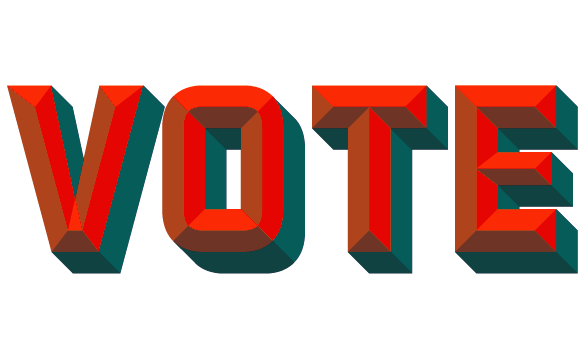When you head to the polls, you’ll have a lot of decisions to make. Though most of us know who we’ll select at the top of the ticket, there are other races, candidates, and bonds that all deserve a few minutes of research prior to voting. We’ve put together some info on what all these races are—and what exactly the elected officials do—because the ballots can seem a little overwhelming. For more details on the candidates and their positions, view the awesome Voters Guide from our friends at League of Women Voters of the San Antonio Area. You can also go to Vote411.org to enter your address, see a personalized ballot, compare candidates side-by-side, and even print out your selections to take with you when you vote.
SAISD Bond and Tax Ratification Election (TRE)
Bond Elements:
- Fund renovations at 13 schools, replacing AC and heating units, plumbing and electrical elements.
- Upgrade science labs
- Expand classroom spaces to state guidelines
- Provide equitable facilities
TRE Elements:
- Assist the District in providing technology and other classroom enhancements district-wide to meet today’s educational standards.
- Provide additional funds for teacher compensation for afterschool and summer programs
- Expand extracurricular offerings for students across the District
See how it will impact your tax rate. Source
Railroad Commissioner
Energy is the word. The Railroad Commissioner regulates the energy industry. They used to be appointed, but in the late 1800s, our state constitution made this an elected position. So…they regulate pollution, gas and utility rates, and alternative fuels to name a few. To run, a person must be at least 25-years-old, be a resident of TX, and be registered to vote. Source
Justice of the Supreme Court of Texas
Composed of the Chief Justice and eight Justices, the Supreme Court of Texas is the court of last resort for civil matters in the State of Texas, which means, for example, they hear final appeals of decisions on civil cases and attorney discipline. Members of this court must be at least 35-years-old, a resident of Texas, licensed to practice law in Texas, and must have at least ten years of experience practicing law. Source
Court of Criminal Appeals
The Court of Criminal Appeals is Texas’ highest court for criminal cases and consists of a Presiding Judge and eight Judges. For example, they review all death penalty cases and hear final appeals on criminal cases. Members of this court must be 35-74 years-old, a U.S. citizen, a Texas resident, licensed to practice law in Texas, a registered voter, & have at least 10 years experience as a lawyer or judge. Source 1 & 2
State Board of Education
The State Board of Education (SBOE) sets policies and standards for Texas public schools. The primary responsibilities of the SBOE include:
- Setting curriculum standards
- Reviewing and adopting instructional materials
- Establishing graduation requirements
- Overseeing the Texas Permanent School Fund
- Appointing board members to military reservation and special school districts
- Providing final review of rules proposed by the State Board for Educator Certification
- Reviewing the commissioner’s proposed award of new charter schools, with authority to veto a recommended applicant
Members must be must be at least 26-years-old, a U.S. citizen, a Texas resident, and a registered voter. Source
District Judges
District courts have original jurisdiction in felony criminal cases, divorce cases, land title disputes, election contests, civil matters in which at least $200 is disputed or claimed in damages, as well as other matters. Judges are elected to four-year terms. Source
County Court-at-Law No. 5
The county courts at law may hear both civil and criminal matters. County courts have exclusive jurisdiction over “Class A” and “Class B” misdemeanors (these offenses can involve jail time), concurrent jurisdiction over civil cases where the amount in controversy is moderately sized, and appellate jurisdiction over JP and municipal court cases. Source
Sheriff
The Office of Sheriff serves as the chief law enforcement officer for the county and is also responsible for all judicial support including court security and oversees the operations of the Bexar County Adult Detention Center. Source
Tax-Assessor Collector
The Bexar County Tax Assessor-Collector is a constitutional officer mandated by the Texas constitution, (one of only two constitutionally mandated county-wide elected positions), elected by and directly responsible to the people. Primary duties include assessing and collecting property taxes for the county and registering all motor vehicles within the county. Source
County Commissioners
The Commissioners Court is the overall managing/governing body of Bexar County. It is comprised of the County Judge and four Commissioners. Each Commissioner represents a quarter of the population in Bexar County. The Court is responsible for budgetary decisions, tax and revenue decisions, and all personnel decisions (except for certain positions which are either elected or appointed by the judiciary or other committees). The Court also appoints and monitors the actions of all County department heads other than those offices headed by elected officials. Source
Justice of the Peace
This court has jurisdiction over Small Claims and Class “C” Misdemeanors. Offenses include matters pertaining to evictions; juvenile offenses such as failure to attend school, disorderly conduct, or minor in possession of alcohol or tobacco; violations concerning driver’s license, moving vehicle violations, liability insurance and vehicle plate inspections, etc. Source
Constable
Primary duties consist of serving subpoenas and executing judgments of the courts. Source

